百度网站优化培训网络口碑营销案例分析
文章目录
- 1、简介
- 2、安装
- 2.1 安装nltk库
- 2.2 安装nltk语料库
- 3、测试
- 3.1 分句分词
- 3.2 停用词过滤
- 3.3 词干提取
- 3.4 词形/词干还原
- 3.5 同义词与反义词
- 3.6 语义相关性
- 3.7 词性标注
- 3.8 命名实体识别
- 3.9 Text对象
- 3.10 文本分类
- 3.11 其他分类器
- 3.12 数据清洗
- 结语
1、简介
NLTK - 自然语言工具包 - 是一套开源Python。 支持自然研究和开发的模块、数据集和教程 语言处理。NLTK 需要 Python 版本 3.7、3.8、3.9、3.10 或 3.11。
NLTK是一个高效的Python构建的平台,用来处理人类自然语言数据。它提供了易于使用的接口,通过这些接口可以访问超过50个语料库和词汇资源(如WordNet),还有一套用于分类、标记化、词干标记、解析和语义推理的文本处理库,以及工业级NLP库的封装器和一个活跃的讨论论坛。
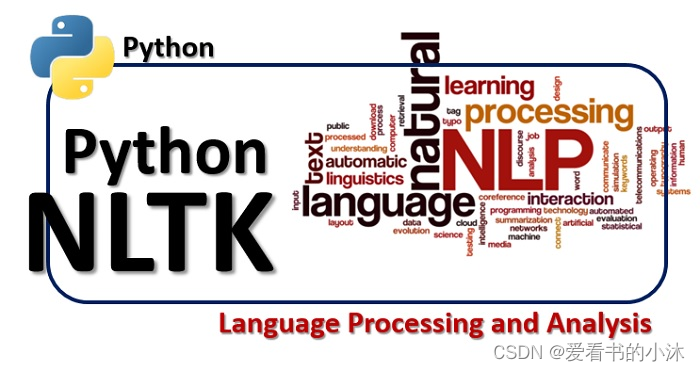
2、安装
2.1 安装nltk库
The Natural Language Toolkit (NLTK) is a Python package for natural language processing. NLTK requires Python 3.7, 3.8, 3.9, 3.10 or 3.11.
pip install nltk
# or
pip install nltk -i https://pypi.tuna.tsinghua.edu.cn/simple

可以用以下代码测试nltk分词的功能:
2.2 安装nltk语料库
在NLTK模块中包含数十种完整的语料库,可用来练习使用,如下所示:
古腾堡语料库:gutenberg,包含古藤堡项目电子文档的一小部分文本,约有36000本免费电子书。
网络聊天语料库:webtext、nps_chat
布朗语料库:brown
路透社语料库:reuters
影评语料库:movie_reviews,拥有评论、被标记为正面或负面的语料库;
就职演讲语料库:inaugural,有55个文本的集合,每个文本是某个总统在不同时间的演说.
- 方法1:在线下载
import nltk
nltk.download()
通过上面命令代码下载,大概率是失败的。
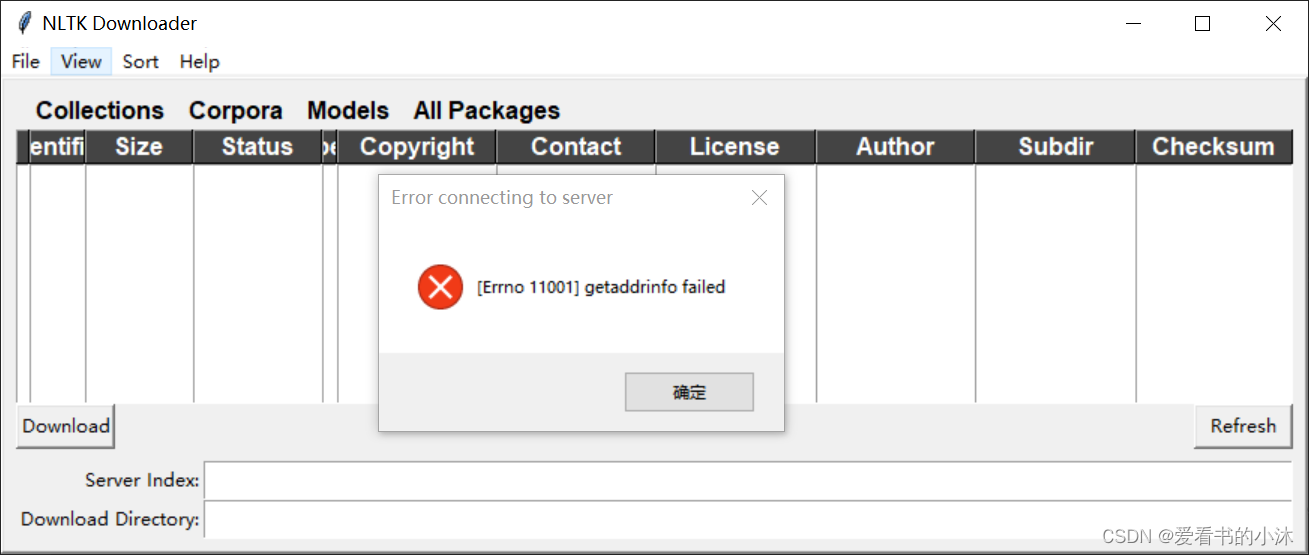

-
方法2:手动下载,离线安装
github:https://github.com/nltk/nltk_data/tree/gh-pages
gitee:https://gitee.com/qwererer2/nltk_data/tree/gh-pages
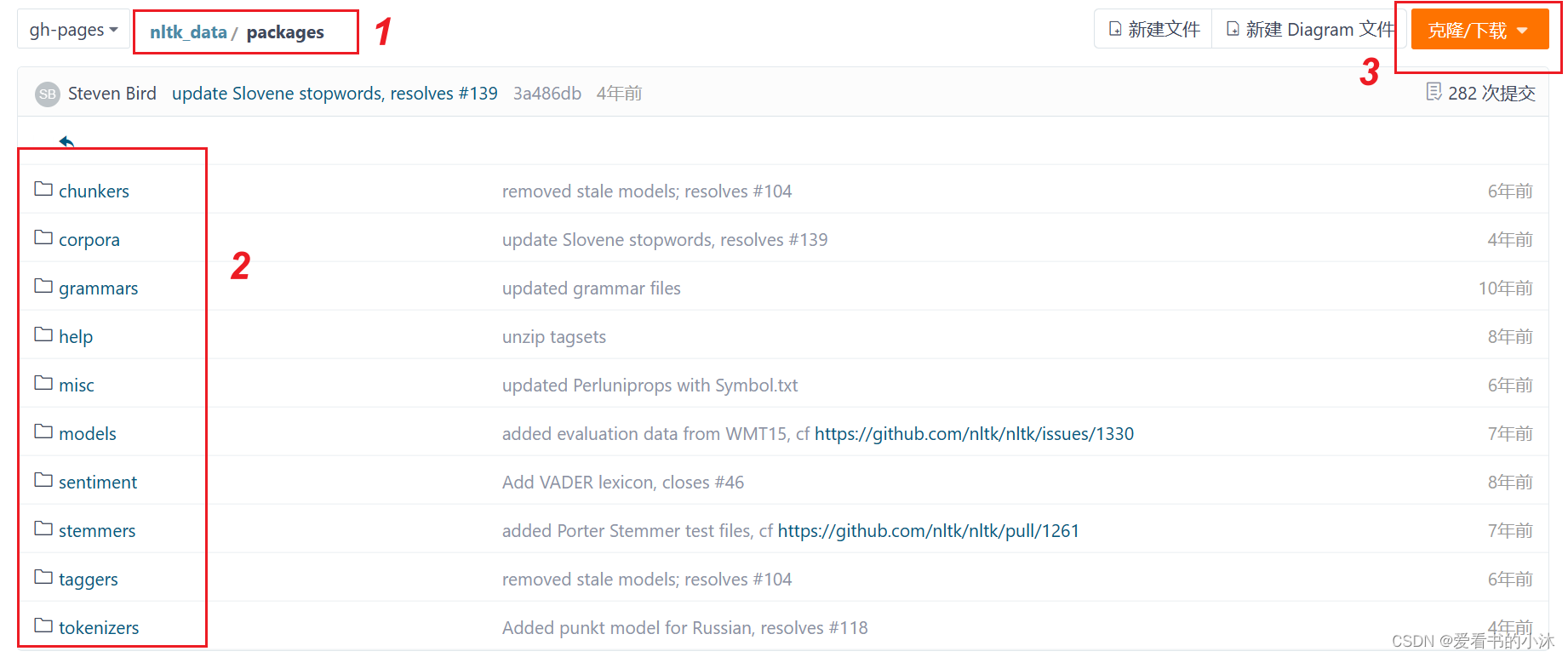
-
查看packages文件夹应该放在哪个路径下
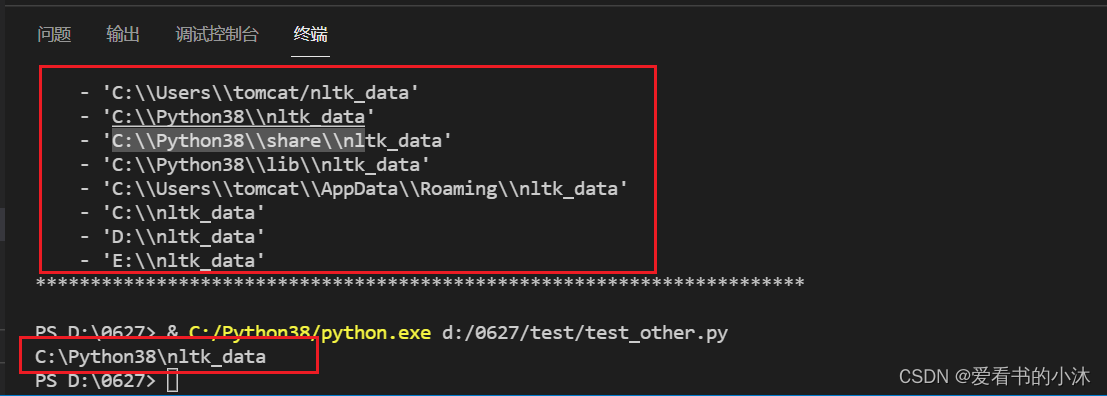
将下载的packages文件夹改名为nltk_data,放在如下文件夹:

-
验证是否安装成功
from nltk.book import *

- 分词测试
import nltk
ret = nltk.word_tokenize("A pivot is the pin or the central point on which something balances or turns")
print(ret)

- wordnet词库测试
WordNet是一个在20世纪80年代由Princeton大学的著名认知心理学家George Miller团队构建的一个大型的英文词汇数据库。名词、动词、形容词和副词以同义词集合(synsets)的形式存储在这个数据库中。
import nltk
nltk.download('wordnet')
from nltk.corpus import wordnet as wn
from nltk.corpus import brown
print(brown.words())

3、测试
3.1 分句分词
英文分句:nltk.sent_tokenize :对文本按照句子进行分割
英文分词:nltk.word_tokenize:将句子按照单词进行分隔,返回一个列表
from nltk.tokenize import sent_tokenize, word_tokenizeEXAMPLE_TEXT = "Hello Mr. Smith, how are you doing today? The weather is great, and Python is awesome. The sky is pinkish-blue. You shouldn't eat cardboard."print(sent_tokenize(EXAMPLE_TEXT))
print(word_tokenize(EXAMPLE_TEXT))from nltk.corpus import stopwords
stop_word = set(stopwords.words('english')) # 获取所有的英文停止词
word_tokens = word_tokenize(EXAMPLE_TEXT) # 获取所有分词词语
filtered_sentence = [w for w in word_tokens if not w in stop_word] #获取案例文本中的非停止词
print(filtered_sentence)

3.2 停用词过滤
停止词:nltk.corpus的 stopwords:查看英文中的停止词表。
定义了一个过滤英文停用词的函数,将文本中的词汇归一化处理为小写并提取。从停用词语料库中提取出英语停用词,将文本进行区分。
from nltk.tokenize import sent_tokenize, word_tokenize #导入 分句、分词模块
from nltk.corpus import stopwords #导入停止词模块
def remove_stopwords(text):text_lower=[w.lower() for w in text if w.isalpha()]stopword_set =set(stopwords.words('english'))result = [w for w in text_lower if w not in stopword_set]return resultexample_text = "Stray birds of summer come to my window to sing and fly away. And yellow leaves of autumn,which have no songs,flutter and fall there with a sigh."
word_tokens = word_tokenize(example_text)
print(remove_stopwords(word_tokens))

from nltk.tokenize import sent_tokenize, word_tokenize #导入 分句、分词模块example_text = "Stray birds of summer come to my window to sing and fly away. And yellow leaves of autumn,which have no songs,flutter and fall there with a sigh."
word_tokens = word_tokenize(example_text) from nltk.corpus import stopwords
test_words = [word.lower() for word in word_tokens]
test_words_set = set(test_words)
test_words_set.intersection(set(stopwords.words('english')))
filtered = [w for w in test_words_set if(w not in stopwords.words('english'))]
print(filtered)
3.3 词干提取
词干提取:是去除词缀得到词根的过程,例如:fishing、fished,为同一个词干 fish。Nltk,提供PorterStemmer进行词干提取。
from nltk.stem import PorterStemmer
from nltk.tokenize import sent_tokenize,word_tokenize
ps = PorterStemmer()
example_words = ["python","pythoner","pythoning","pythoned","pythonly"]
print(example_words)
for w in example_words:print(ps.stem(w),end=' ')

from nltk.stem import PorterStemmer
from nltk.tokenize import sent_tokenize,word_tokenize
ps = PorterStemmer()example_text = "Stray birds of summer come to my window to sing and fly away. And yellow leaves of autumn,which have no songs,flutter and fall there with a sigh."
print(example_text)
words = word_tokenize(example_text)for w in words:print(ps.stem(w), end=' ')

from nltk.stem import PorterStemmer
from nltk.tokenize import sent_tokenize, word_tokenize
ps = PorterStemmer()example_text1 = "Stray birds of summer come to my window to sing and fly away. And yellow leaves of autumn,which have no songs,flutter and fall there with a sigh."
example_text2 = "There little thoughts are the rustle of leaves; they have their whisper of joy in my mind."
example_text3 = "We, the rustling leaves, have a voice that answers the storms,but who are you so silent? I am a mere flower."
example_text4 = "The light that plays, like a naked child, among the green leaves happily knows not that man can lie."
example_text5 = "My heart beats her waves at the shore of the world and writes upon it her signature in tears with the words, I love thee."
example_text_list = [example_text1, example_text2, example_text3, example_text4, example_text5]for sent in example_text_list:words = word_tokenize(sent)print("tokenize: ", words)stems = [ps.stem(w) for w in words]print("stem: ", stems)

3.4 词形/词干还原
与词干提取类似,词干提取包含被创造出的不存在的词汇,而词形还原的是实际的词汇。
from nltk.stem import WordNetLemmatizer
lemmatizer = WordNetLemmatizer()
print('cats\t',lemmatizer.lemmatize('cats'))
print('better\t',lemmatizer.lemmatize('better',pos='a'))

from nltk.stem import WordNetLemmatizerlemmatizer = WordNetLemmatizer()print(lemmatizer.lemmatize("cats"))
print(lemmatizer.lemmatize("cacti"))
print(lemmatizer.lemmatize("geese"))
print(lemmatizer.lemmatize("rocks"))
print(lemmatizer.lemmatize("python"))
print(lemmatizer.lemmatize("better", pos="a"))
print(lemmatizer.lemmatize("best", pos="a"))
print(lemmatizer.lemmatize("run"))
print(lemmatizer.lemmatize("run",'v'))

唯一要注意的是,lemmatize接受词性参数pos。 如果没有提供,默认是“名词”。
- 时态和单复数
from nltk.tokenize import sent_tokenize, word_tokenize
from nltk.stem import PorterStemmertokens = word_tokenize(text="All work and no play makes jack a dull boy, all work and no play,playing,played", language="english")
ps=PorterStemmer()
stems = [ps.stem(word)for word in tokens]
print(stems)from nltk.stem import SnowballStemmer
snowball_stemmer = SnowballStemmer('english')
ret = snowball_stemmer.stem('presumably')
print(ret)from nltk.stem import WordNetLemmatizer
wordnet_lemmatizer = WordNetLemmatizer()
ret = wordnet_lemmatizer.lemmatize('dogs')
print(ret)

3.5 同义词与反义词
nltk提供了WordNet进行定义同义词、反义词等词汇数据库的集合。
- 同义词
from nltk.corpus import wordnet
# 单词boy寻找同义词
syns = wordnet.synsets('girl')
print(syns[0].name())
# 只是单词
print(syns[0].lemmas()[0].name())
# 第一个同义词的定义
print(syns[0].definition())
# 单词boy的使用示例
print(syns[0].examples())

- 近义词与反义词
from nltk.corpus import wordnet
synonyms = [] # 定义近义词存储空间
antonyms = [] # 定义反义词存储空间
for syn in wordnet.synsets('bad'):for i in syn.lemmas():synonyms.append(i.name())if i.antonyms():antonyms.append(i.antonyms()[0].name())print(set(synonyms))
print(set(antonyms))

3.6 语义相关性
wordnet的wup_similarity() 方法用于语义相关性。
from nltk.corpus import wordnetw1 = wordnet.synset('ship.n.01')
w2 = wordnet.synset('boat.n.01')
print(w1.wup_similarity(w2))w1 = wordnet.synset('ship.n.01')
w2 = wordnet.synset('car.n.01')
print(w1.wup_similarity(w2))w1 = wordnet.synset('ship.n.01')
w2 = wordnet.synset('cat.n.01')
print(w1.wup_similarity(w2))

NLTK 提供多种 相似度计分器(similarity scorers),比如:
- path_similarity
- lch_similarity
- wup_similarity
- res_similarity
- jcn_similarity
- lin_similarity
3.7 词性标注
把一个句子中的单词标注为名词,形容词,动词等。
from nltk.tokenize import sent_tokenize, word_tokenize #导入 分句、分词模块example_text = "Stray birds of summer come to my window to sing and fly away. And yellow leaves of autumn,which have no songs,flutter and fall there with a sigh."
word_tokens = word_tokenize(example_text) from nltk import pos_tag
tags = pos_tag(word_tokens)
print(tags)

- 标注释义如下
| POS Tag |指代 |
| --- | --- |
| CC | 并列连词 |
| CD | 基数词 |
| DT | 限定符|
| EX | 存在词|
| FW |外来词 |
| IN | 介词或从属连词|
| JJ | 形容词 |
| JJR | 比较级的形容词 |
| JJS | 最高级的形容词 |
| LS | 列表项标记 |
| MD | 情态动词 |
| NN |名词单数|
| NNS | 名词复数 |
| NNP |专有名词|
| PDT | 前置限定词 |
| POS | 所有格结尾|
| PRP | 人称代词 |
| PRP$ | 所有格代词 |
| RB |副词 |
| RBR | 副词比较级 |
| RBS | 副词最高级 |
| RP | 小品词 |
| UH | 感叹词 |
| VB |动词原型 |
| VBD | 动词过去式 |
| VBG |动名词或现在分词 |
| VBN |动词过去分词|
| VBP |非第三人称单数的现在时|
| VBZ | 第三人称单数的现在时 |
| WDT |以wh开头的限定词 |
POS tag list:CC coordinating conjunction
CD cardinal digit
DT determiner
EX existential there (like: "there is" ... think of it like "there exists")
FW foreign word
IN preposition/subordinating conjunction
JJ adjective 'big'
JJR adjective, comparative 'bigger'
JJS adjective, superlative 'biggest'
LS list marker 1)
MD modal could, will
NN noun, singular 'desk'
NNS noun plural 'desks'
NNP proper noun, singular 'Harrison'
NNPS proper noun, plural 'Americans'
PDT predeterminer 'all the kids'
POS possessive ending parent's
PRP personal pronoun I, he, she
PRP$ possessive pronoun my, his, hers
RB adverb very, silently,
RBR adverb, comparative better
RBS adverb, superlative best
RP particle give up
TO to go 'to' the store.
UH interjection errrrrrrrm
VB verb, base form take
VBD verb, past tense took
VBG verb, gerund/present participle taking
VBN verb, past participle taken
VBP verb, sing. present, non-3d take
VBZ verb, 3rd person sing. present takes
WDT wh-determiner which
WP wh-pronoun who, what
WP$ possessive wh-pronoun whose
WRB wh-abverb where, when
3.8 命名实体识别
命名实体识别(NER)是信息提取的第一步,旨在在文本中查找和分类命名实体转换为预定义的分类,例如人员名称,组织,地点,时间,数量,货币价值,百分比等。
import nltk
from nltk.tokenize import word_tokenize
from nltk.tag import pos_tagex= 'European authorities fined Google a record $5.1 billion on Wednesday for abusing its power in the mobile phone market and ordered the company to alter its practices'def preprocess(sent):sent= nltk.word_tokenize(sent)sent= nltk.pos_tag(sent)return sent# 单词标记和词性标注
sent= preprocess(ex)
print(sent)# 名词短语分块
pattern='NP: {<DT>?<JJ> * <NN>}'
cp= nltk.RegexpParser(pattern)
cs= cp.parse(sent)
print(cs)# IOB标签
from nltk.chunk import conlltags2tree, tree2conlltags
from pprint import pprint
iob_tagged= tree2conlltags(cs)
pprint(iob_tagged)# 分类器识别命名实体,类别标签(如PERSON,ORGANIZATION和GPE)
from nltk import ne_chunk
ne_tree= ne_chunk(pos_tag(word_tokenize(ex)))
print(ne_tree)
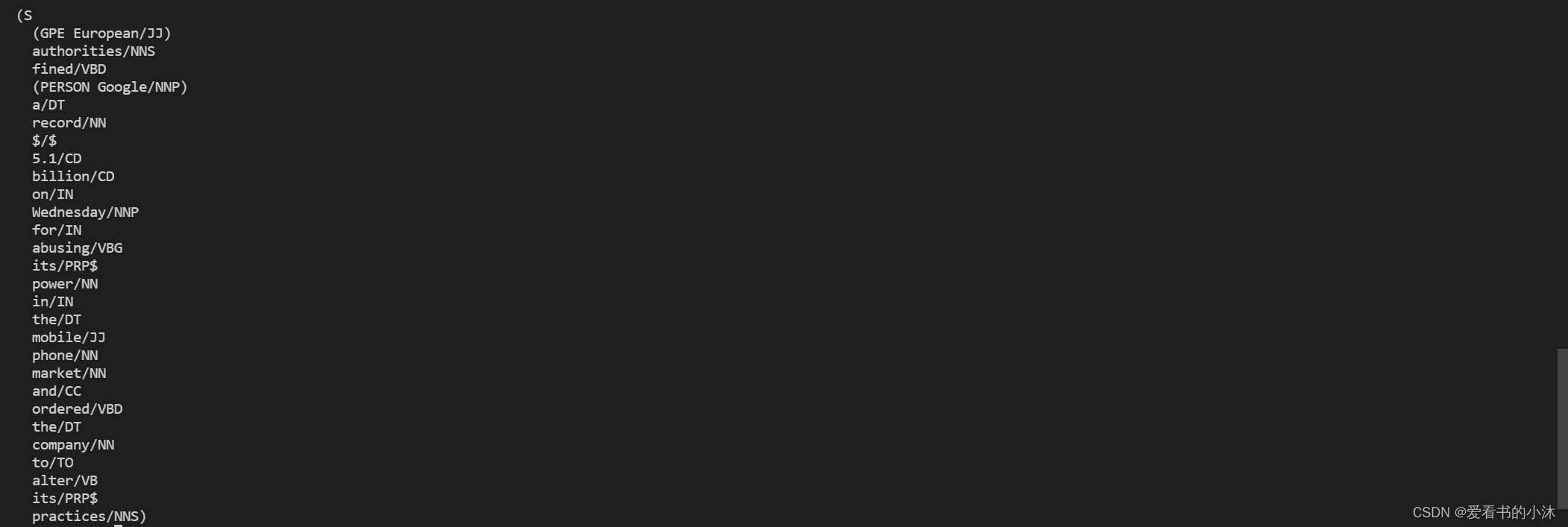
import nltk
from nltk.tokenize import word_tokenize
from nltk.tag import pos_tag
from nltk.chunk import conlltags2tree, tree2conlltagsdef learnAnaphora():sentences = ["John is a man. He walks","John and Mary are married. They have two kids","In order for Ravi to be successful, he should follow John","John met Mary in Barista. She asked him to order a Pizza"]for sent in sentences:chunks = nltk.ne_chunk(nltk.pos_tag(nltk.word_tokenize(sent)), binary=False)stack = []print(sent)items = tree2conlltags(chunks)for item in items:if item[1] == 'NNP' and (item[2] == 'B-PERSON' or item[2] == 'O'):stack.append(item[0])elif item[1] == 'CC':stack.append(item[0])elif item[1] == 'PRP':stack.append(item[0])print("\t {}".format(stack)) learnAnaphora()

import nltksentence = 'Peterson first suggested the name "open source" at Palo Alto, California'# 先预处理
words = nltk.word_tokenize(sentence)
pos_tagged = nltk.pos_tag(words)# 运行命名实体标注器
ne_tagged = nltk.ne_chunk(pos_tagged)
print("NE tagged text:")
print(ne_tagged)# 只提取这个 树(tree)里的命名实体
print("Recognized named entities:")
for ne in ne_tagged:if hasattr(ne, "label"):print(ne.label(), ne[0:])ne_tagged.draw()


NLTK 内置的命名实体标注器(named-entity tagger),使用的是宾州法尼亚大学的 Automatic Content Extraction(ACE)程序。该标注器能够识别 组织机构(ORGANIZATION) 、人名(PERSON) 、地名(LOCATION) 、设施(FACILITY)和地缘政治实体(geopolitical entity)等常见实体(entites)。
NLTK 也可以使用其他标注器(tagger),比如 Stanford Named Entity Recognizer. 这个经过训练的标注器用 Java 写成,但 NLTK 提供了一个使用它的接口(详情请查看 nltk.parse.stanford 或 nltk.tag.stanford)。
3.9 Text对象
from nltk.tokenize import sent_tokenize, word_tokenize #导入 分句、分词模块example_text = "Stray birds of summer come to my window to sing and fly away. And yellow leaves of autumn,which have no songs,flutter and fall there with a sigh."
word_tokens = word_tokenize(example_text)
word_tokens = [word.lower() for word in word_tokens]from nltk.text import Text
t = Text(word_tokens)
print(t.count('and') )
print(t.index('and') )
t.plot(8)
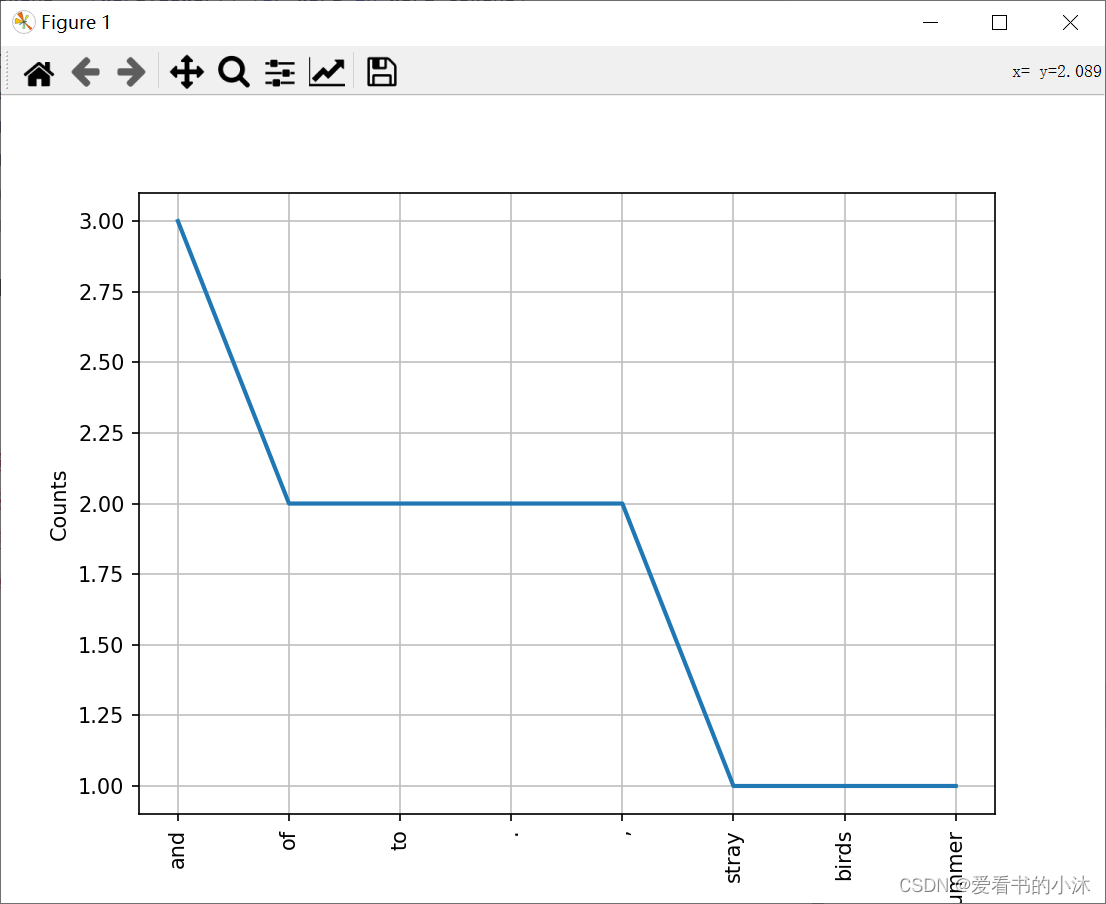
3.10 文本分类
import nltk
import random
from nltk.corpus import movie_reviewsdocuments = [(list(movie_reviews.words(fileid)), category)for category in movie_reviews.categories()for fileid in movie_reviews.fileids(category)]random.shuffle(documents)print(documents[1])all_words = []
for w in movie_reviews.words():all_words.append(w.lower())all_words = nltk.FreqDist(all_words)
print(all_words.most_common(15))
print(all_words["stupid"])

3.11 其他分类器
- 下面列出的是NLTK中自带的分类器:
from nltk.classify.api import ClassifierI, MultiClassifierI
from nltk.classify.megam import config_megam, call_megam
from nltk.classify.weka import WekaClassifier, config_weka
from nltk.classify.naivebayes import NaiveBayesClassifier
from nltk.classify.positivenaivebayes import PositiveNaiveBayesClassifier
from nltk.classify.decisiontree import DecisionTreeClassifier
from nltk.classify.rte_classify import rte_classifier, rte_features, RTEFeatureExtractor
from nltk.classify.util import accuracy, apply_features, log_likelihood
from nltk.classify.scikitlearn import SklearnClassifier
from nltk.classify.maxent import (MaxentClassifier, BinaryMaxentFeatureEncoding,TypedMaxentFeatureEncoding,ConditionalExponentialClassifier)
- 通过名字预测性别
import nltk
from nltk.corpus import names
from nltk import classify#特征取的是最后一个字母
def gender_features(word):return {'last_letter': word[-1]}#数据准备
name=[(n,'male') for n in names.words('male.txt')]+[(n,'female') for n in names.words('female.txt')]
print(len(name))#特征提取和训练模型
features=[(gender_features(n),g) for (n,g) in name]
classifier = nltk.NaiveBayesClassifier.train(features[:6000])#测试
print(classifier.classify(gender_features('Frank')))
print(classify.accuracy(classifier, features[6000:]))print(classifier.classify(gender_features('Tom')))
print(classify.accuracy(classifier, features[6000:]))print(classifier.classify(gender_features('Sonya')))
print(classify.accuracy(classifier, features[6000:]))

- 情感分析
import nltk.classify.util
from nltk.classify import NaiveBayesClassifier
from nltk.corpus import namesdef word_feats(words):return dict([(word, True) for word in words])#数据准备
positive_vocab = ['awesome', 'outstanding', 'fantastic', 'terrific', 'good', 'nice', 'great', ':)']
negative_vocab = ['bad', 'terrible', 'useless', 'hate', ':(']
neutral_vocab = ['movie', 'the', 'sound', 'was', 'is', 'actors', 'did', 'know', 'words', 'not']#特征提取
positive_features = [(word_feats(pos), 'pos') for pos in positive_vocab]
negative_features = [(word_feats(neg), 'neg') for neg in negative_vocab]
neutral_features = [(word_feats(neu), 'neu') for neu in neutral_vocab]train_set = negative_features + positive_features + neutral_features#训练
classifier = NaiveBayesClassifier.train(train_set)# 测试
neg = 0
pos = 0
sentence = "Awesome movie, I liked it"
sentence = sentence.lower()
words = sentence.split(' ')
for word in words:classResult = classifier.classify(word_feats(word))if classResult == 'neg':neg = neg + 1if classResult == 'pos':pos = pos + 1print('Positive: ' + str(float(pos) / len(words)))
print('Negative: ' + str(float(neg) / len(words)))

3.12 数据清洗
- 去除HTML标签,如 &
text_no_special_html_label = re.sub(r'\&\w+;|#\w*|\@\w*','',text)
print(text_no_special_html_label)
- 去除链接标签
text_no_link = re.sub(r'http:\/\/.*|https:\/\/.*','',text_no_special_html_label)
print(text_no_link)
- 去除换行符
text_no_next_line = re.sub(r'\n','',text_no_link)
print(text_no_next_line)
- 去除带有$符号的
text_no_dollar = re.sub(r'\$\w*\s','',text_no_next_line)
print(text_no_dollar)
- 去除缩写专有名词
text_no_short = re.sub(r'\b\w{1,2}\b','',text_no_dollar)
print(text_no_short)
- 去除多余空格
text_no_more_space = re.sub(r'\s+',' ',text_no_short)
print(text_no_more_space)
- 使用nltk分词
tokens = word_tokenize(text_no_more_space)
tokens_lower = [s.lower() for s in tokens]
print(tokens_lower)
- 去除停用词
import re
from nltk.corpus import stopwordscache_english_stopwords = stopwords.words('english')
tokens_stopwords = [s for s in tokens_lower if s not in cache_english_stopwords]
print(tokens_stopwords)
print(" ".join(tokens_stopwords))
除了NLTK,这几年spaCy的应用也非常广泛,功能与nltk类似,但是功能更强,更新也快,语言处理上也具有很大的优势。
结语
如果您觉得该方法或代码有一点点用处,可以给作者点个赞,或打赏杯咖啡;╮( ̄▽ ̄)╭
如果您感觉方法或代码不咋地//(ㄒoㄒ)//,就在评论处留言,作者继续改进;o_O???
如果您需要相关功能的代码定制化开发,可以留言私信作者;(✿◡‿◡)
感谢各位大佬童鞋们的支持!( ´ ▽´ )ノ ( ´ ▽´)っ!!!
